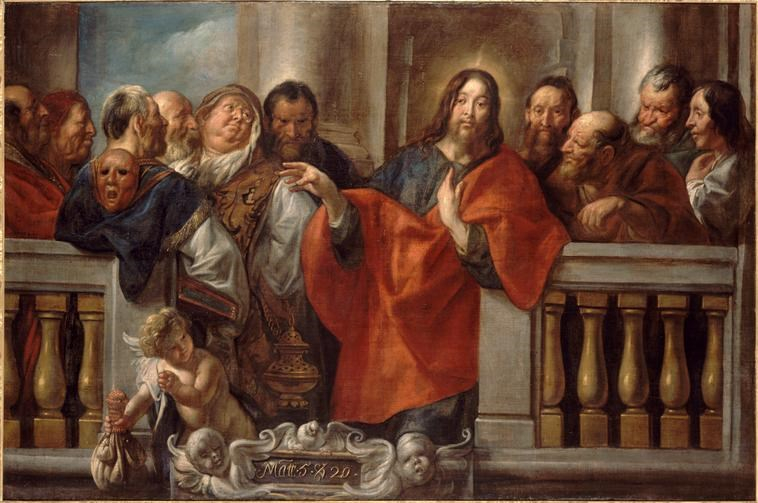Introduction:
In the intricate tapestry of biblical imagery and symbolism, parallels and prefigurations abound, offering profound insights into the spiritual and historical significance of various elements within sacred texts. One such intriguing parallel can be found between the “Seat of Moses” mentioned in the Gospel of Matthew (Matthew 23:1-3) and the revered “Chair of Peter” in Christian tradition. This article aims to explore how the former serves as a prefiguration of the latter, shedding light on the continuity and authority within the Judeo-Christian narrative.
The Seat of Moses:
In Matthew 23:1-3, Jesus addresses the crowds and his disciples, emphasizing the authority of the scribes and Pharisees, who sit on the “Seat of Moses.” This term refers to a metaphorical seat of authority, symbolizing the teaching and judicial authority held by those who interpret and administer the Mosaic Law. The scribes and Pharisees, despite their moral failings and hypocrisy, held a position of authority within Jewish religious life due to their knowledge and interpretation of the Law.
The Seat of Moses served as a locus of religious and legal interpretation, where judgments were rendered and teachings were imparted. It was a symbol of continuity with the Law given to Moses on Mount Sinai, representing the ongoing transmission of divine instruction to the people of Israel.
The Chair of Peter:
In Christian tradition, particularly within Catholicism, the “Chair of Peter” (Latin: Cathedra Petri) holds a similarly significant role. This symbolic chair represents the authority and primacy granted by Jesus to the Apostle Peter, whom he referred to as the “rock” upon which he would build his Church (Matthew 16:18). The Chair of Peter symbolizes the teaching authority and leadership passed down through the papacy, tracing its origins to Peter himself.
Like the Seat of Moses, the Chair of Peter signifies continuity with divine authority. It represents the ongoing guidance and governance of the Church by the successors of Peter, who are entrusted with preserving and interpreting the teachings of Jesus Christ. Just as the Seat of Moses was a symbol of adherence to the Mosaic Law, the Chair of Peter signifies fidelity to the teachings of Christ and the apostolic tradition.
Prefiguration and Continuity:
The parallel between the Seat of Moses and the Chair of Peter extends beyond mere symbolism; it speaks to a deeper theological truth about continuity and authority within the Judeo-Christian tradition. Just as the Seat of Moses represented the authority of the Law within Judaism, the Chair of Peter signifies the authority of Christ’s teachings within Christianity.
Moreover, the transition from the Seat of Moses to the Chair of Peter reflects a theological evolution, wherein the covenantal relationship between God and humanity finds fulfillment in the person of Jesus Christ. While the Mosaic Law provided a temporary framework for righteousness and holiness, the coming of Christ inaugurated a new covenant, founded on grace and redemption.
In this light, the Chair of Peter emerges as a fulfillment of the promise made to Peter by Jesus, affirming his role as the “rock” upon which the Church is built. Just as the Seat of Moses ensured continuity with the Law given to Moses, the Chair of Peter ensures continuity with the teachings of Christ and the apostolic tradition, safeguarding the faith and unity of the Church throughout history.
Conclusion:
The parallel between the Seat of Moses and the Chair of Peter offers a profound insight into the continuity and authority within the Judeo-Christian narrative. As symbols of divine authority and guidance, both serve as reminders of God’s ongoing presence and involvement in the affairs of humanity.
While the Seat of Moses represented the authority of the Mosaic Law within Judaism, the Chair of Peter signifies the authority of Christ’s teachings within Christianity. Through these symbols, we glimpse the unfolding of God’s plan of salvation, culminating in the person of Jesus Christ, who entrusted his authority to Peter and his successors.
Thus, the transition from the Seat of Moses to the Chair of Peter underscores the theological continuity between the Old and New Testaments, affirming the timeless relevance of God’s word and the enduring nature of his covenant with humanity.
